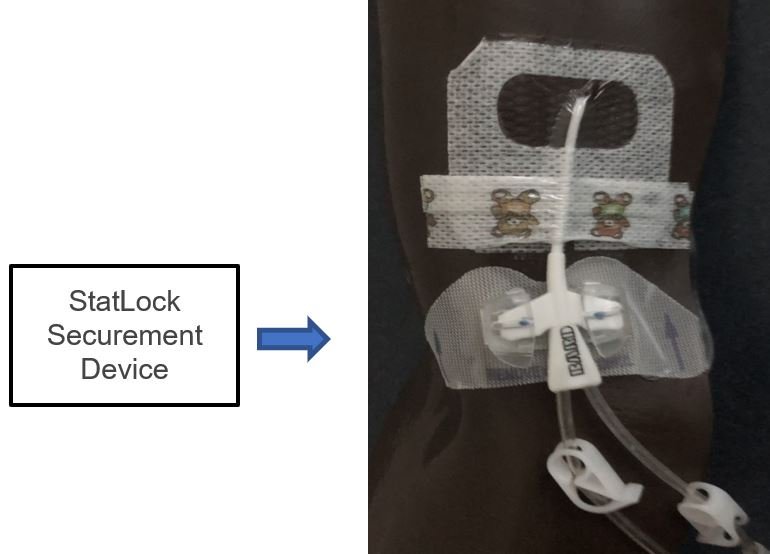HINT: How to secure a central venous access device (CVAD) to prevent accidental dislodgement?
Connected Care Quick Hits are up to date and evidence based recommendations for the care of children with medical complexity & technology dependence, from hospital to home.
HINT: How to secure a central venous access device (CVAD) to prevent accidental dislodgement?
SITUATION:
This QuickHit was informed by family caregivers and home and community care providers who reported different practices for the securement of CVADs in home and community care, compared to the hospital.
BACKGROUND:
Many children with medical complexity rely on CVADs in home and community care for long-term intravenous therapy including medication administration, parenteral nutrition, dialysis, hydration and blood sampling.
Types of CVADs include central venous lines (CVLs) and peripherally inserted central catheters (PICCs).
CVADs require appropriate securement to prevent accidental dislodgement.
ASSESSMENT:
Accidental dislodgement of a CVAD can typically be prevented by using appropriate securement methods and by performing frequent assessments of the site.
Signs and symptoms of CVAD dislodgement may include:
Increased external length of the CVAD
Dacron cuff visible outside of the skin
Edema or leaking at the exit site
Burning sensation or pain with infusions
Difficulty aspirating blood
RECOMMENDATION:
Connected Care recommends following the principles of ‘Loop’, ‘Dress’ and ‘Secure’ to reduce the risk of accidental CVAD dislodgement.
1. Loop the catheter around the exit site during dressing changes if possible. Please note that not all CVADs, including hemodialysis catheters and non-tunnelled central venous catheters, can be looped.
2. Dress the exit site with transparent semi-permeable membrane (TSM) dressings (e.g. Tegaderm, IV 3000). These dressings allow for direct visualization of the site and are fully adhesive
3. Secure the length of the catheter using an appropriate securement method. For CVADs with "wings", a securement device can be used (e.g. StatLock).
For CVADs without "wings", or if a securement device is not available, the length of the catheter can be secured with tape (e.g. Hypafix) using the following method:
Cut a thick piece of tape, approximately the length of the catheter. Cut the middle of the tape vertically, about half of the length of the tape (Image 1).
Place the uncut portion of the tape on the exposed portion of the catheter above the clamp, covering any thick-thin junctions on the line (Image 2).
Chevron the ‘legs’ of the tape under the catheter and adhere them to the skin (Image 3).
Consider the following when caring for children with CVADs:
Prepare a CVAD emergency kit that always remains with the child. Review the following video on CVAD emergency procedures.
Change CVAD dressings and securement devices every 7 days or as needed if loose or soiled. Review the following video on CVAD dressing and securement device changes.
Connected Care Live is not to be used in the event of an emergency.

















